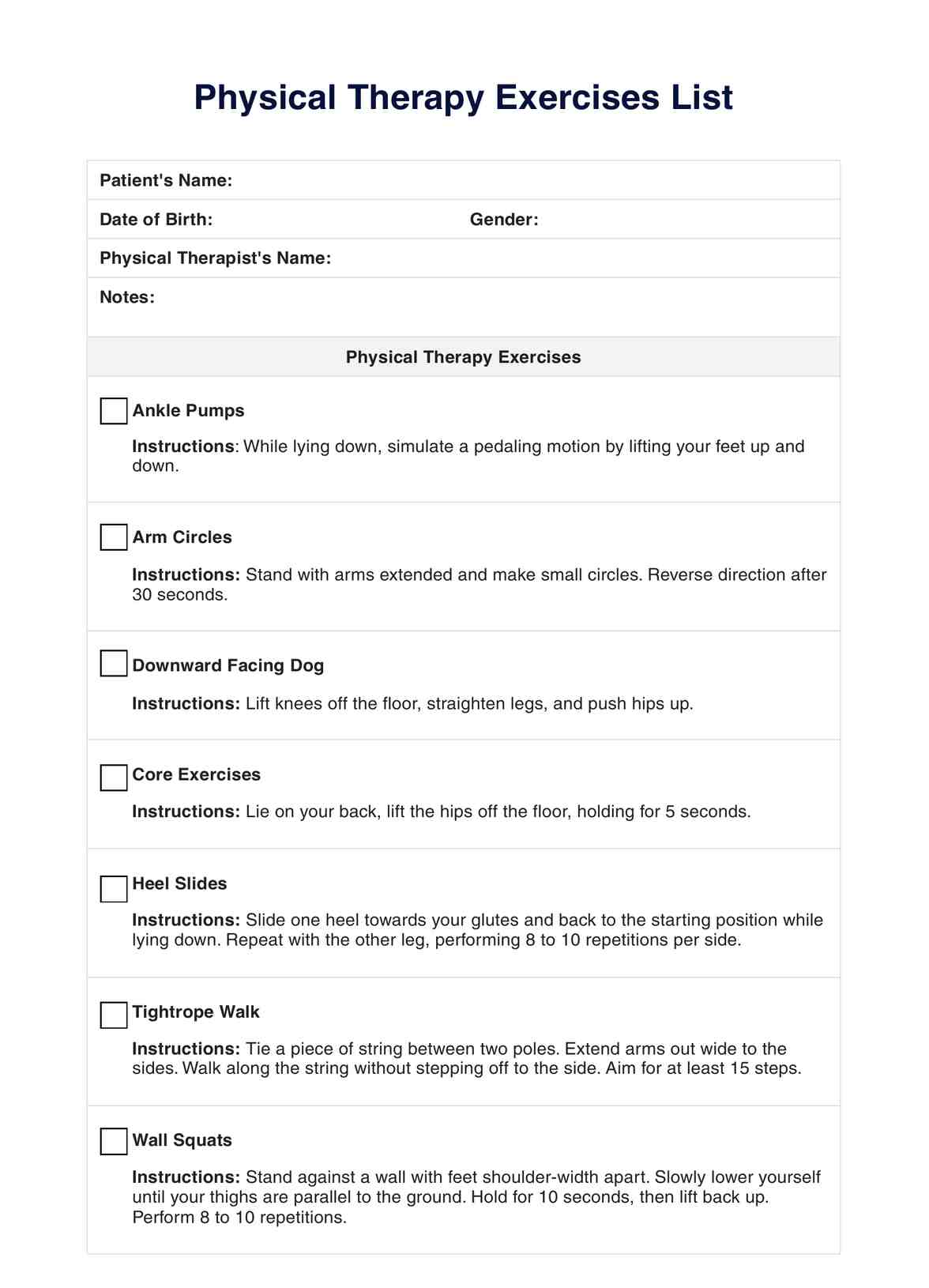Physical therapy exercises are commonly called therapeutic exercises.

Physical Therapy Exercises List
Design a PT session tailored for your client with the help of a Physical Therapy Exercises List. Click here for a free template and a guide on its usage.
Use Template
Physical Therapy Exercises List Template
Commonly asked questions
In certain situations and depending on the exercise, it's ok that it's done daily.
They are pediatric physical therapy, neurological physical therapy, geriatric physical therapy, and orthopedic physical therapy.
EHR and practice management software
Get started for free
*No credit card required
Free
$0/usd
Unlimited clients
Telehealth
1GB of storage
Client portal text
Automated billing and online payments











